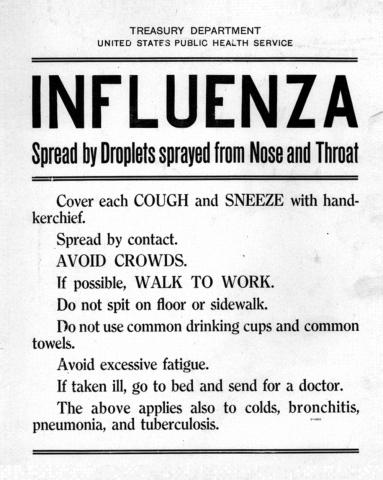1918
Just over 100 years ago, another epidemic struck the country. Bryn Mawr’s response kept the campus safe.
In 2005, researchers at the University of Michigan’s Center for the History of Medicine looked at places they called “provisional escape communities”—places that saw virtually no fatalities during the influenza pandemic that swept the world in 1918. Although only a short train ride away from the devastation that hit Philadelphia, Bryn Mawr College was one of those communities.
The centerpiece of the College response was quarantine. No one was allowed to leave or visit campus. The train was off limits. Large-scale gatherings (“except necessary academic and religious meetings”) were curtailed.
Social distancing also played a part on campus. As reported in the College News, organizers of an anti-flu party held in October kept a careful distance: “Taking the form of a strictly anti-flu gathering, the Christian Association Reception last Saturday was held on the lawn in front of Merion. The board and association presidents received from behind masks and extended a hearty yardstick with a warm handshake for all at the further end.”
All these measures spared Bryn Mawr the worst, with no fatalities from the 110 flu cases on campus.
Bryn Mawr Scrubs Lancaster Inn
“The old Lancaster Inn, which has been turned into an emergency hospital for influenza patients by the town commissioners, is being scrubbed and swept by a group of Bryn Mawr workers in bathing caps, influenza masks, and hockey skirts.
“One of the Bryn Mawr professors of the classics helped to keep the home fires burning with a pile of kindling wood and, as the Community Center is attending to the housekeeping and furnishings, Miss Jane Smith supervised the work.”
—The College News, October 10, 1918
Published on: 05/20/2020

